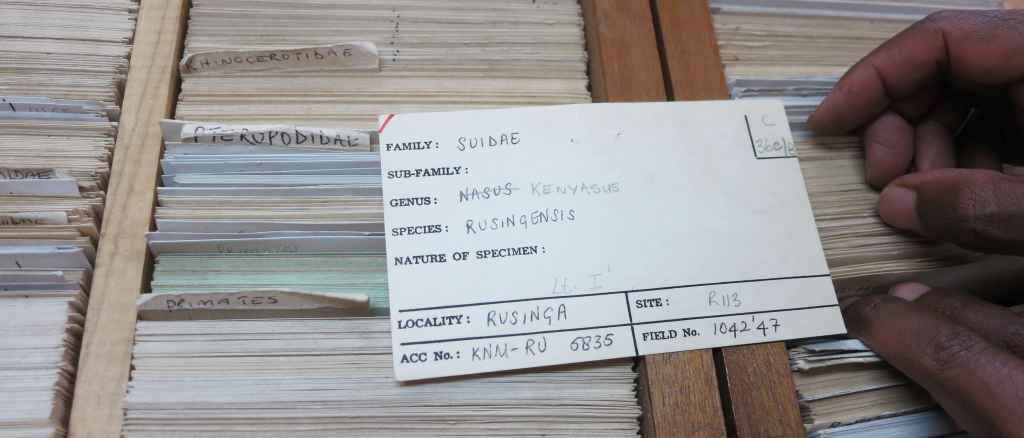“Cradle of Mankind” – can you help to transcribe African vertebrate fossil specimen cards into a database?

A Memorandum of Understanding has been established between the National Museums of Kenya and the Finnish Museum of Natural History (Luomus). This co-operation between the institutions has enabled a project of entering fossil specimen data into a collection management system. When ready, the system will make valuable data accessible for researchers and the public worldwide.
The first phase in this joint partnership is to transcribe handwritten accession card data of thousands of fossil specimens into a digital format. Transcribing this information is too large a task for the limited number of museum personnel. Therefore help is needed transcribing the data into digital format and an online searchable database for researchers, students and the public.
The two parties have set an on-line transcription project, “Cradle of Mankind”, using Zooniverse, the world’s largest and most popular platform for people-powered research, with up to a million volunteers. In this project, people are asked to enter the data written on the accession cards. If you are interested in participating in the project, please register yourself at Zooniverse and after signing in, head to Cradle of Mankind.
Why is this important?
The information these cards contain can help to answer the fundamental questions of human and mammalian evolution, and in reconstructing the environment and climate of the past, says Kari Lintulaakso, collection coordinator at the Finnish Museum of Natural History Luomus. As Dr Job Kibii, head of the Palaeontology Section at the National Museums of Kenya, summarises: “Every bone has a story to tell, a tale about an individual, a time and a place millions of years old.”
For more information
Project owners
- Dr Fredrick Kyalo Manthi: Head of the Department of Earth Sciences at the National Museums of Kenya, fkmanthi@museums.or.ke
- Dr Job Kibii: Head of Palaeontology Section at the National Museums of Kenya, jkibii@museums.or.ke
Project team
- The lead of card scanning and technical matters: Mr Stephen Maikweki, National Museums of Kenya, smaikweki@gmail.com
- Data management: Dr Kari Lintulaakso, Collection coordinator at the Finnish Museum of Natural History, kari.lintulaakso@helsinki.fi
Cradle of Mankind Zooniverse project
Earth Sciences Department National Museums of Kenya
National Museums of Kenya, Palaeontology section
National Museums of Kenya houses the fossil heritage of Kenya, having over 200,000 fossil specimens. These fossils come from more than 100 sites concentrated within the Rift Valley, which is one of the most important locations in the history of human evolutionary. The fossil collection includes some of the best hominid specimens in the world, attracting researchers from all over the world.
The Finnish Museum of Natural History Luomus
The Finnish Museum of Natural History (Luomus) is an independent research institution functioning under the auspices of the University of Helsinki. It is responsible for the national natural history collections specimens from all over the world. Luomus serves research in the fields of botany, zoology, geology and palaeontology as well as educational purposes. Luomus coordinates the Finnish Biodiversity Information Facility (FinBIF) which compiles the Finnish biodiversity information to one single service for open access sharing. Much of this data comes from the Collection Management System Kotka.